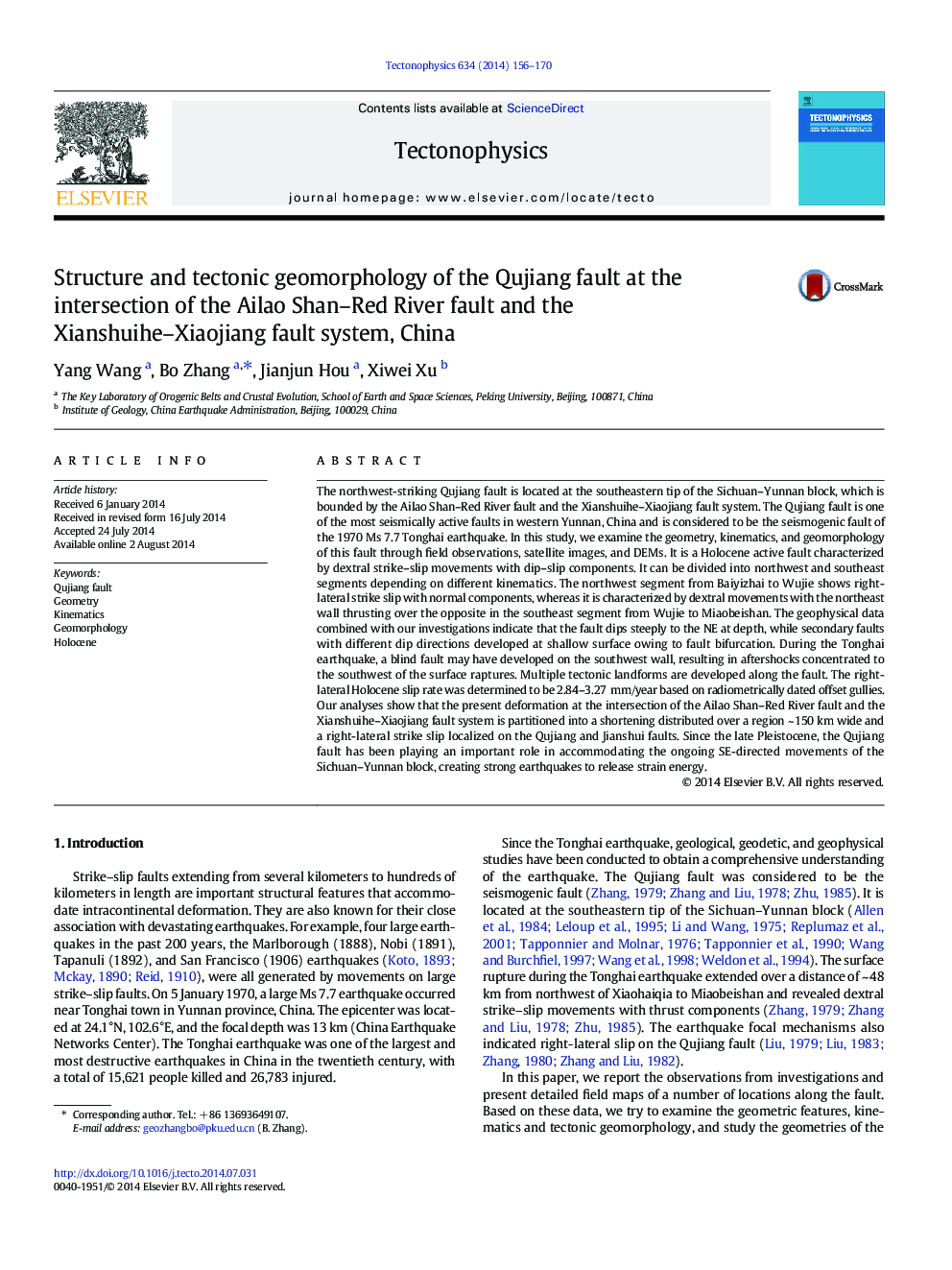| کد مقاله | کد نشریه | سال انتشار | مقاله انگلیسی | نسخه تمام متن |
|---|---|---|---|---|
| 4691825 | 1636757 | 2014 | 15 صفحه PDF | دانلود رایگان |

• The Qujiang fault acts in Holocene.
• It is characterized by dextral strike–slip motion with dip–slip components.
• The fault plane dips steeply to the NE at depth with a blind fault developing.
• The slip rate during the late Pleistocene to present is 2.84–3.27 mm/year.
• The activity of the Qujiang fault is caused by the SE-escape of the Sichuan–Yunnan block.
The northwest-striking Qujiang fault is located at the southeastern tip of the Sichuan–Yunnan block, which is bounded by the Ailao Shan–Red River fault and the Xianshuihe–Xiaojiang fault system. The Qujiang fault is one of the most seismically active faults in western Yunnan, China and is considered to be the seismogenic fault of the 1970 Ms 7.7 Tonghai earthquake. In this study, we examine the geometry, kinematics, and geomorphology of this fault through field observations, satellite images, and DEMs. It is a Holocene active fault characterized by dextral strike–slip movements with dip–slip components. It can be divided into northwest and southeast segments depending on different kinematics. The northwest segment from Baiyizhai to Wujie shows right-lateral strike slip with normal components, whereas it is characterized by dextral movements with the northeast wall thrusting over the opposite in the southeast segment from Wujie to Miaobeishan. The geophysical data combined with our investigations indicate that the fault dips steeply to the NE at depth, while secondary faults with different dip directions developed at shallow surface owing to fault bifurcation. During the Tonghai earthquake, a blind fault may have developed on the southwest wall, resulting in aftershocks concentrated to the southwest of the surface raptures. Multiple tectonic landforms are developed along the fault. The right-lateral Holocene slip rate was determined to be 2.84–3.27 mm/year based on radiometrically dated offset gullies. Our analyses show that the present deformation at the intersection of the Ailao Shan–Red River fault and the Xianshuihe–Xiaojiang fault system is partitioned into a shortening distributed over a region ~ 150 km wide and a right-lateral strike slip localized on the Qujiang and Jianshui faults. Since the late Pleistocene, the Qujiang fault has been playing an important role in accommodating the ongoing SE-directed movements of the Sichuan–Yunnan block, creating strong earthquakes to release strain energy.
Journal: Tectonophysics - Volume 634, 5 November 2014, Pages 156–170